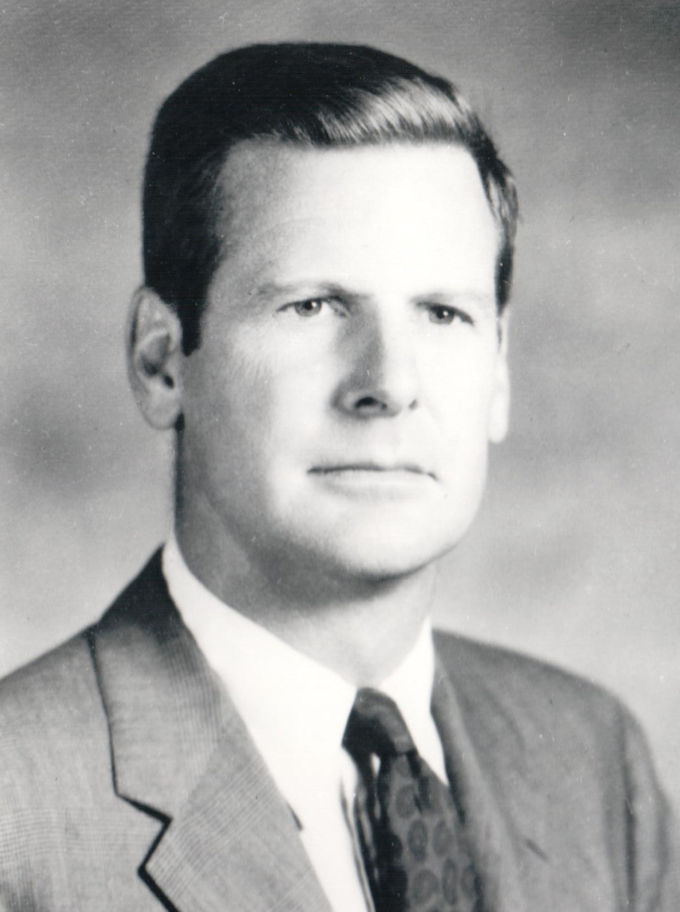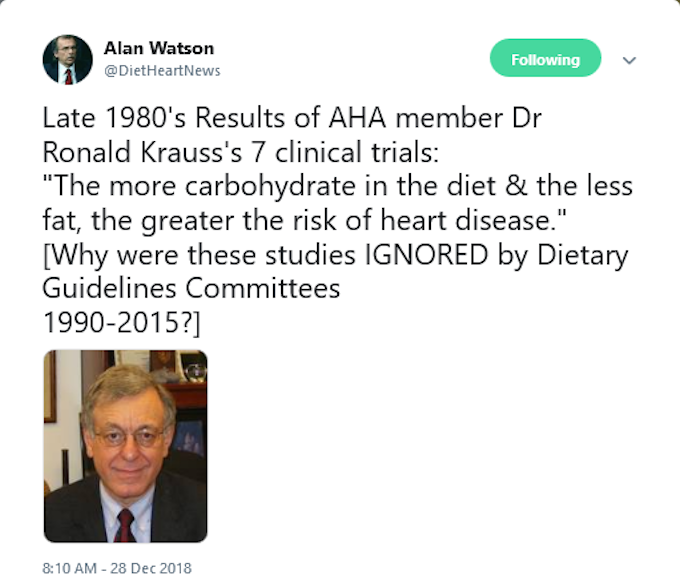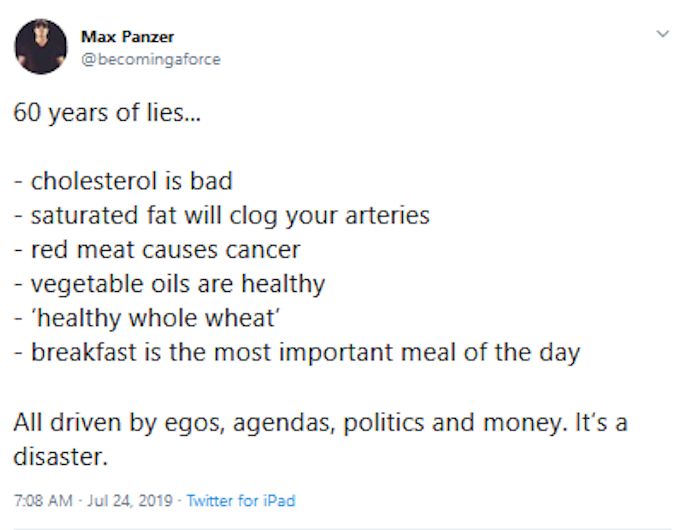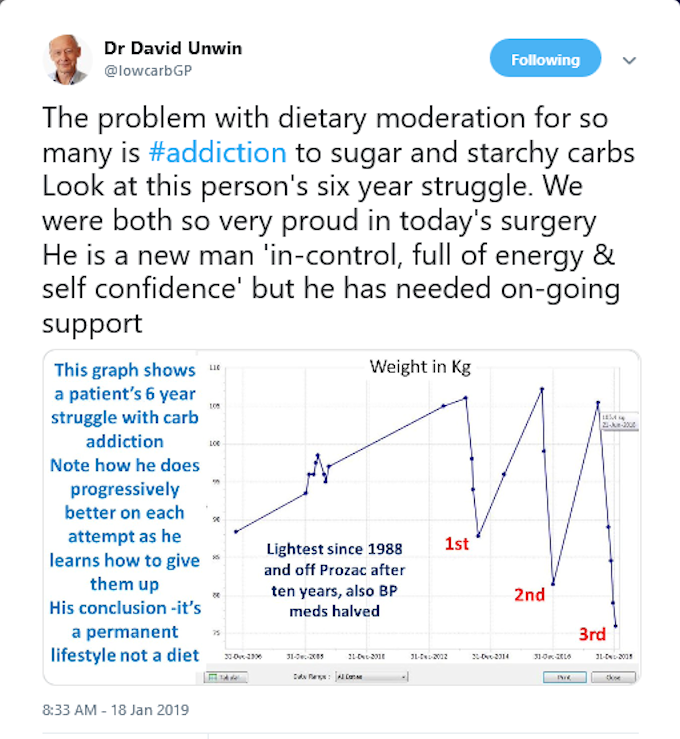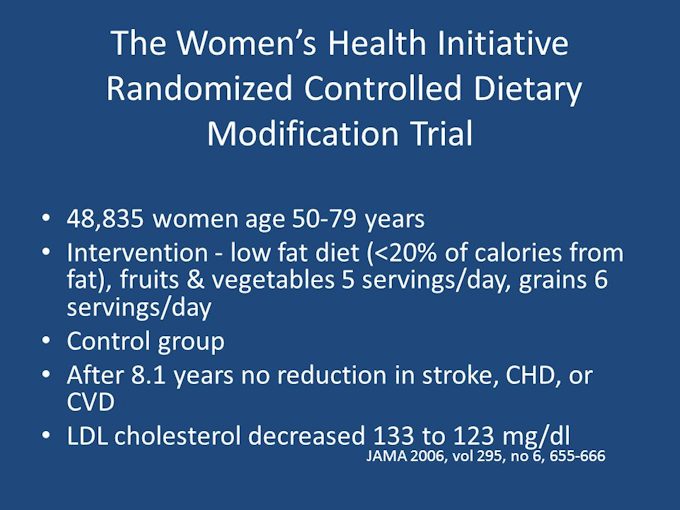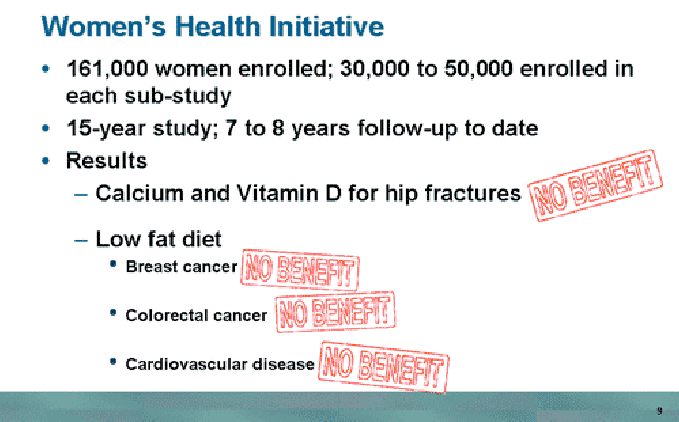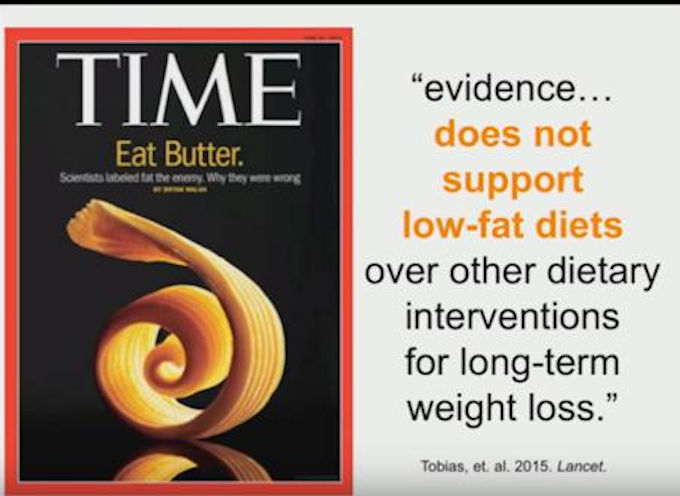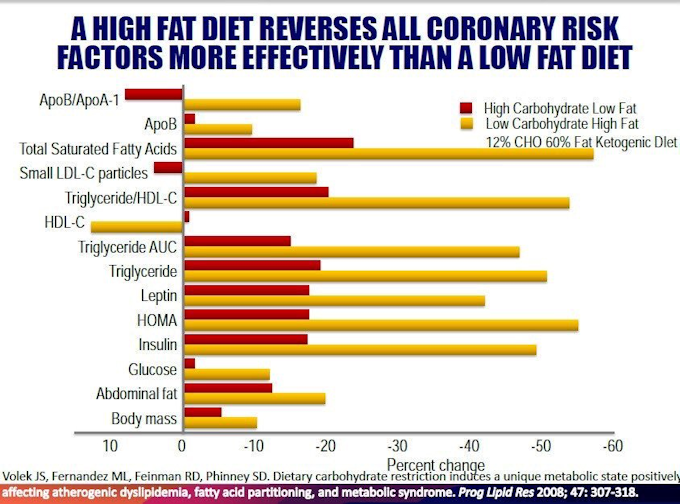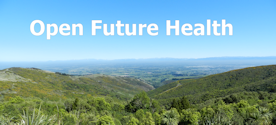
Using Best Evidence to Improve Human Health
The idea of basing medicine on scientific evidence is still relatively new.
How do you improve your health?
You know the answer: better diet, exercise, sleep, social engagement, a work to do, and stable family life.
For very human reasons, both professional and personal, old ideas refuse to die, even when the science clearly shows they are wrong.
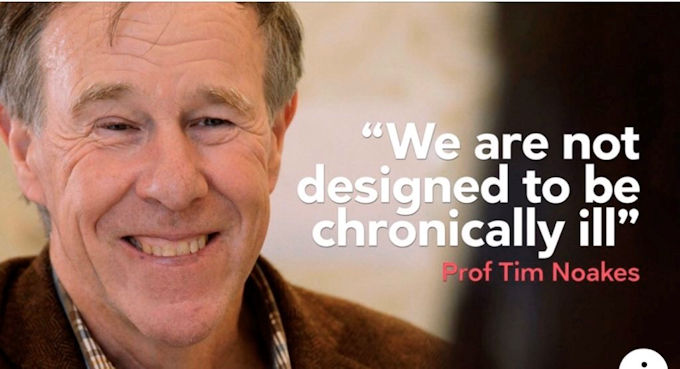
It took ![]() Prof. Timothy Noakes over four years to have the charges that his advice misrepresents the best current evidence over-thrown in court.
Prof. Timothy Noakes over four years to have the charges that his advice misrepresents the best current evidence over-thrown in court.
Perhaps ![]() Dr Eric Westman was lucky. He had a diabetic and obese patient, who reversed her diabetes by following Dr Atkins's advice. Dr Westman contacted Dr Atkins, and found him and his assistant to be very helpful. They had excellent clinical records, and were willing to share what they knew. The medical profession had successfully made Dr Atkins an outcast. Only Dr Westman declared any interest in what he had achieved. Not just weight loss, but also the reversal of type two diabetes.
Dr Eric Westman was lucky. He had a diabetic and obese patient, who reversed her diabetes by following Dr Atkins's advice. Dr Westman contacted Dr Atkins, and found him and his assistant to be very helpful. They had excellent clinical records, and were willing to share what they knew. The medical profession had successfully made Dr Atkins an outcast. Only Dr Westman declared any interest in what he had achieved. Not just weight loss, but also the reversal of type two diabetes.
Richard Bernstein, an engineer with Type I Diabetes, by self experimentation, and meticulous record keeping, discovered how to better control his insulin management and his health. After recommending a very low carbohydrate diet for diabetes he was ignored. So he qualified as a doctor (In 1983), but still nobody wanted to know. Then ![]() Dr Richard Bernstein self published. Like Dr Atkins, that just made him a target for ridicule, he was been hounded by the diabetes establishment for more than 40 years. In 2019 the American Diabetes Association quietly admitted that he was probably right.
Dr Richard Bernstein self published. Like Dr Atkins, that just made him a target for ridicule, he was been hounded by the diabetes establishment for more than 40 years. In 2019 the American Diabetes Association quietly admitted that he was probably right.
The best known modern attack on a fellow professional who dared to change his mind, was ![]() the trial of Professor Timothy Noakes, who faced a charge of unprofessional conduct for giving unconventional advice. It's a shameful event about how we deny knowledge when it suits us. This situation is not easy to understand, but worth the effort.
the trial of Professor Timothy Noakes, who faced a charge of unprofessional conduct for giving unconventional advice. It's a shameful event about how we deny knowledge when it suits us. This situation is not easy to understand, but worth the effort.
The Very Slow Acceptance of New Ideas
Typically New Science and Good Evidence is Ignored
Knowledge is tightly guarded and controlled. Powerful intellectual institutions control how that information is used and changed over time. Institutions are guardians of the knowledge that is written in text-books and in protocols to be followed by professionals. Eminence was and remains the main criteria for the acceptance of established ideas. Research was intended to confirm what was already known, and thus to increase the eminence of the institution and the incumbent leadership. To increase the financial rewards of successful practice too.
Just after WWII there were not so many highly distinguished scholars and researchers. Often a single person became a dominant character. That's unlikely today. Decisions are usually made by committees. Committees are likely to be driven by human needs for security and continued existence. Science, particularly new science is unlikely to be the driving force.
This is intended to be for benefit of society. And generally that's so, OFH doesn't believe it's a conspiracy, it's just what people do. Have respect for your mentors. Don't do anything to bring the findings of your University or Laboratory into question. Don't bite the hand that feeds you.
Unfortunately, delays of 30 and 40 years, in the adoption of new evidence based ideas, is still common. The speed of electronic communication doesn't help much. As Thomas Kuhn wrote over 50 years ago, the rate of change in the sciences, is controlled but the death rate of the leading authorities in any field. Eminence is a restraint on the rate of change.
For that reason, expert opinion, institutional power, eminence, has been identified as problematic. Since about 1995, we've looked for "evidence based research" to give us quality health information on which to base recommendations and protocols. ![]() The Cochran Collaboration, is a good example, but even there, people engage in battles, that are human, not scientific. Particularly in nutrition and health, conducting the sort of experiments that would be acceptable as scientific proof, is often not possible.
The Cochran Collaboration, is a good example, but even there, people engage in battles, that are human, not scientific. Particularly in nutrition and health, conducting the sort of experiments that would be acceptable as scientific proof, is often not possible.
Two well known examples: Scurvy and Bacterial Disease
In 1753, naval surgeon James Lind, published his Treatise on Scurvy that is now considered a classic in medical science. A method for the prevention of scurvy, using oranges or limes. Dr Lind proved that the use of citrus fruits worked in 1747. However, it took the Royal Navy over forty years to adopt Lind’s recommendations.
Twenty years later, Captain James Cook, successfully sailed the world, preventing scurvy in his ship, Endeavour. However, he used several methods to achieve success, and couldn't be sure which one was critical.
One hundred years later, in 1847, a Hungarian doctor named Ignaz Semmelweis demonstrated that hand washing by doctors was very effective in preventing childbirth fever. Doctors resisted the idea that they were causing patient deaths. They knew nothing about bacteria and germs at the time. About 20 years later, bacteria were discovered by Louis Pasteur, but his interest was in wine and food. Soon after Robert Koch discovered that bacteria caused diseases. Joseph Lister, a British surgeon used this same knowledge to sterilise the operating area and equipment to prevent infections during surgery. However, by now 30 or 40 years have passed. Only then did doctors understand why they must wash their hands.
Evidence Based Medicine
Recognition that much medical practice lacked a satisfactory evidence base, was made explicit in the early 1990's. It took about 10 years for the idea to be widely supported. Since then Evidence-based Practice Centers (EPCs) have been created in most countries to do assessments, and to support the development of guidelines. However, evidence-based guidelines and policies may conflict with experience-based practices. That can lead to contradictions, contested opinions, and unintended crises. People are still people.
It is easy to imagine that with today's 24 hour news cycle, and with modern research methods and wide access to universities, that today, important information about health would be quickly and easily communicated. Sadly, that's not the case. For instance with the Covid-19 virus, the demand for fresh news, a scoop, has led to wide public distribution of draft articles by researchers, and medical doctors. News is manufactured, when the best answer might be "we still don't know." False news, or fake news, has always been with us.
For instance, in the 1960's, at the Joslin's Diabetes Center, in the laboratory of Owen and Cahill, "news," a preliminary finding, that the brain required 130gm of dietary glucose a day was released. That's wrong, the final paper didn't confirm that, but once it was released in public, the wrong number 130gm, like the genie refused to go back into the bottle.
When people don't know, they make up a solution. The divine right of kings, the earth at the center of the universe, the belief in angels, fairies and witches, was used to explain events, which made sense in a pre-scientific world. Today, similar non-scientific ideas like: detoxing the body, that meat in the diet rots in the gut, vegetarian diets are healthy diets, that 5G internet will cause disease, are modern made up ideas, which seem to explain something, but have no substance.
When current nutritional and medical protocols are challenged by new science based understanding there are still many barriers to acceptance. If one openly challenges the practice of other professionals in your group, you can quickly run into trouble. Your livelihood, your own status as a professional, and even your sanity may be questioned. The progress of science is slow, for a reason. ![]() Thomas Kuhn wrote about this in 1962. The situation remains the same. Improved practice takes many years to be widely adopted.
Thomas Kuhn wrote about this in 1962. The situation remains the same. Improved practice takes many years to be widely adopted.
There are many examples of people who challenged the status quo, and paid a price. Dr George Mann, Dr Joseph Kraft. - ![]() Dr Richard Bernstein - Dr Robert Atkins -
Dr Richard Bernstein - Dr Robert Atkins - ![]() Prof. Timothy Noakes,
Prof. Timothy Noakes, ![]() Dr Gary Fettke, Dr Evelyne Bourdua-Roy, and
Dr Gary Fettke, Dr Evelyne Bourdua-Roy, and ![]() Dr Annika Dahlqvist, to name a few.
Dr Annika Dahlqvist, to name a few.
Rosalyn Yalow and Solomon A. Berson- Radioimmunoassay, and Hormones.
Yalow and Berson developed a technique called radioimmunoassay, or RIA, a method of quantifying minute amounts of biological substances in the body. This enabled the measurement of tiny chemical changes in the body.
Yalow and Berson in 1960 published a paper that identified low blood insulin as the trigger for the beginning of fat burning, and the production of ketones. Their methods also showed that insulin derived from cattle wasn't satisfactory because the immune system identified it as foreign agent. They also distinguished Type I Diabetes from Type II Diabetes for the first time.
Soon their work would be verified by George F. Cahill Jr.
![]() Brain Metabolism during Fasting
Brain Metabolism during Fasting
Research paper link here.
O. E. Owen, A. P. Morgan, H. G. Kemp, J. M. Sullivan, M. G. Herrera, and G. F. Cahill Jr.
First published October 1, 1967
Catheterization of cerebral vessels in three obese patients undergoing 5-6 wks of starvation demonstrated that ß-hydroxybutyrate and acetoacetate replaced glucose as the predominant fuel for brain metabolism. A strikingly low respiratory quotient was also observed, suggesting a carboxylation mechanism as a means of disposing of some of the carbon of the consumed substrates.
Dr. George F. Cahill Jr.
George F. Cahill Jr., Prof. of Medicine at Harvard (Until 1990), and director of the Joslin Diabetes Center from 1962 to 1978.
In the late 1960's, Drs. Oliver Owen and George Cahill initially demonstrated that the brain utilized about 130 grams of glucose per day. Their early data, was misinterpreted by the American Institute of Medicine to say that the brain required 130 grams of glucose per day. Owen and Cahill later demonstrated that when betahydroxybutyrate was available, the brain used less than 50gm of glucose a day.
In the 1960's, Cahill was involved in tracking the blood chemistry of people who were trying out an experimental treatment for severe obesity: total starvation, for up to six weeks, in the hospital.
After the first few days without food, the liver starts breaking down protein to make glucose to feed the brain. But after about a week, the body makes another shift, and instead of cannibalizing its own proteins it starts breaking down fat into substances called ketones, which can feed the brain in place of glucose. A natural drop in insulin is what drives the shift to ketones, Dr. Cahill determined. We now call this "being in ketosis."
George Cahill's studies transformed scientists understanding of the way insulin regulates metabolism. The findings helped establish the importance of dietary protein to prevent organ damage in people who are on very low-calorie diets.
Ronald M Krauss
Ronald M. Krauss, M.D., is Senior Scientist and Dolores Jordan Endowed Chair at Children's Hospital Oakland Research Institute, Professor of Medicine at UCSF. Briefly from 2009 to 2011, he was on the Dietary Guidelines Committee.
Cardiovascular disease (CVD) is the leading cause of death in the US, and its origins begin in childhood. The prevalence of CVD is strongly influenced by diet. LDL-Cholesterol is implicated, but how?
His laboratory developed and implemented a methodology for analysis of multiple LDL particles. Application of this information for clinical research was enabled by development of two high resolution methods for analysis of lipoprotein.
His group has published a series of articles and reviews, showing the absence of an association of dietary saturated fat intake with CVD risk, despite the well-documented effect of saturated fat on LDL cholesterol levels. These findings, have since been confirmed several times by others.
Dr Krauss's work resulted in membership of the 2010 Dietary Guidelines Committee. In his presence they reluctantly raising the upper limit for dietary fat. But in 2015, they reverted back to the old 30% limit. Once again, groups of eminent people accept the science when it confirms their opinions, and ignore it when it doesn't.
Not only them of course. You and I do that too. Don't be too quick to judge.
Official Advice we Depend On
Click to Image to Enlarge
60 years of false news, based on "expert opinion" for which there is little or no evidence. Since about 1995, the goal of evidence based medicine has exposed many long held "expert" opinions that have no significant evidence.
Click to Image to Enlarge
The recommended low fat diet:
Lowers LDL-Cholesterol ![]()
Ensures Weight Reduction ![]()
Aids Stroke prevention ![]()
Prevents Coronary Heart Disease ![]()
Prevents Cardio-Vascular Disease ![]()
Click to Image to Enlarge
Calcium and vitamin D are critical for bone health. ![]()
A low fat diet reduces cancer. ![]()
A low fat diet reduces colorectal cancer. ![]()
A low fat diet reduces Cardio-Vascular disease. ![]()
In his book Sapiens: A Brief History of Humankind Yural Noah Harari (2011) writes that institutions fund research to enhance the status quo. They want to enhance and validate the prestige of the funders, of the institution, of the incumbents. Above, the National Institutes of Health (USA) funded the Women's Health Initiative. It was a huge study, very well controlled, and intended to confirm once and for all that the recommended diet had all the health benefits the experts claimed for it. The results were a great embarrassment. The powers that be, decided to bury the study, to ignore it. Twenty years later the value and importance of the Women's Health Initiative is slowly being acknowledged.
Click to Image to Enlarge
The human body is not a machine. The theory of CICO is from physics, it applies to machines. Your body is controlled by hormones, enzymes and signalling metabolites.
Click to Image to Enlarge
Saturated fat does not cause heart disease. Refer back to the research of Ronald M Krauss.
Understanding Blood Glucose
All the blood in your system contains about 24 calories of glucose (About 1.5 teaspoons of sugar).
A teaspoon of sugar 4.2gm has 16 calories - 100% carbohydrate. (50% glucose 50% fructose)
What equals 200 calories
Thirteen teaspoons of sugar is 208 calories - 100% carbohydrate.
An iced donut weighs about 70gm and contains 210 calories - 48% carbs, 47% fat, 5% protein.
Two medium sized bananas contain about 200 calories, almost 100% carbohydrate (12% fibre).
150gm of beef steak is about 220 calories - 60% protein and 40% fat.
A fillet of salmon weighs 400gm and contains 230 calories: 50% protein, 50% fat.
What do we make of this?
Ignore calories:
An iced donut does not have the same physiological influence as 400gm of salmon.
Two medium sized bananas are equivalent to 150gm of beef steak.
Beef steak and salmon build you body, while donuts and sugar destroy it.
Click to Image to Enlarge
Dr Richard Mackarness was another who long before dietary guidelines had identified the wrong direction American dietary science was traveling
Click to Image to Enlarge
The European Perspective Investigation into Cancer, has been running for 15 years in 10 countries. The study clearly identifies serious problems with vegetarian diets. It also says the lack of vitamin D, excess alcohol, and obesity cause cancer.
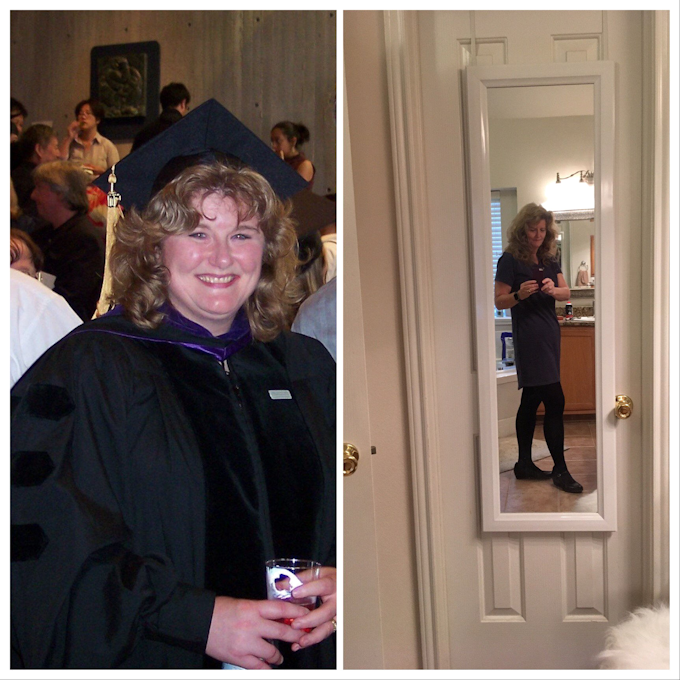
Jennifer as a young woman, and again at age 52 after adopting a Banting style diet.
Click to Image to Enlarge
There is no medical treatment for Metabolic Syndrome. The doctor can't resolve it, but you can.
A Healthy Blood Profile
Click to Image to Enlarge
You can see that critical blood markers all improve on a Banting Diet (High Fat Low Carb Diet.)
The Banting Diet measures foods in grams, the traditional amount of protein in the diet is too small (so we lose muscle mass and bone strength), the amount of fat in the diet is far too small (so we are always hungry, and we lack essential nutrients), and the carbohydrates in the diet are grossly excessive (so we have constantly high insulin,and we keep storing fat). The traditional "balanced diet" is distinctly unhealthy.
Further reading
Here are Eight Useful Background Preparation Pages
![]() Understanding Private and Professional Dissonance
Understanding Private and Professional Dissonance
![]() Better Nutrition to improve your health
Better Nutrition to improve your health
![]() Metabolism, Insulin Resistance and Mental Health
Metabolism, Insulin Resistance and Mental Health
![]() Preserving Bone and Muscle Strength
Preserving Bone and Muscle Strength
![]() What Causes Type II Diabetes? Obesity?
What Causes Type II Diabetes? Obesity?
![]() Lifestyle Changes. Nutrition First, then Exercise.
Lifestyle Changes. Nutrition First, then Exercise.
![]() What is the Best Dietary Pattern for Humans? (Includes OFH Video Three)
What is the Best Dietary Pattern for Humans? (Includes OFH Video Three)
![]() Forbidden Conversations - Family Silence - My Health is My Business (Includes OFH Video Two)
Forbidden Conversations - Family Silence - My Health is My Business (Includes OFH Video Two)


